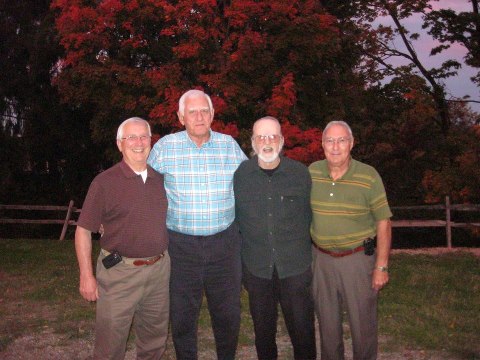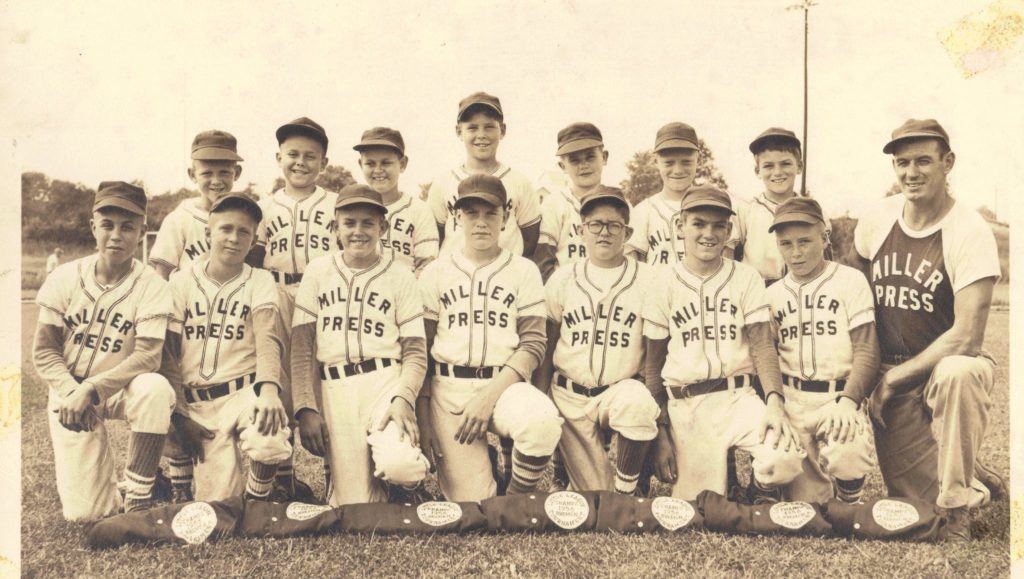MEMORIES
Dwight Eisenhower is president of the US
101 Southern Congressmen call for massive resistance to the Supreme Court desegregation rulings
Italian liner Andrea Doria collides with Swedish liner Stockholm and sinks of Nantucket Island
An anti-Communist revolt in Hungary is crushed by Soviet troops and tanks
Suez crisis occurs in the Middle East
Elvis Presley enters the music charts for the first time, with “Heartbreak Hotel”.
Mel Gibson, Bill Maher, Joe Montana, Tom Hanks, and Larry Bird born
New York Yankees win the World Series
New York Giants win the NFL championship
Montreal Canadians win the Stanley Cup
Howl and Other Poems by Allen Ginsberg is published
Elvis Presley appears on The Ed Sullivan.

Class of 1956




Yvonne Kay Wagner
b. March 29, 1938 (Baltimore, Ohio) – d. June 1, 1980 (near Cleveland, Ohio)
Marie Dovel’s, frustrated aristocratic intellectualism. She worked hard to escape her small town into the heady, urbane life of students at io
Kay was the 1956 Betty Crocker Homemaker of Tomorrow winner at her Liberty Union High School, and two years earlier had won a local contest with an essay on “What Civil Defense Means to Me”
Self preservation is certainly one reason to defend our nation, but there are much deeper reasons which are not so egotistical. The United States is a beautiful example of nature’s bounty, which is not only of scenic essence. We have a fine civilization, progressive industry, honorable culture, and a wonderful fellowship of love which makes us brothers in humanity. We must preserve ourselves physically if we are to hand the heritage of Christian living down to the unborn generations. Preparations for defense are to be made now if our posterity are to be free to worship in Christian churches, be free to print the truth, or be free to voice their opinions.
I am an average American girl enjoying the fruits of generations of hard-working Americans. Feeling neither the need, the demand, nor the necessity, I have done nothing to contribute to the American Utopia. But I must now be ready. I must use my mind, my voice, and my spiritual beliefs we know to be fine, to protect the Nation that was founded in the blood and prayers of righteous men.
When Kay was seventeen the Lancaster Junior Chamber of Congress held its annual “Voice of Democracy” contest and Kay wrote the following:
 “I Speak for Democracy.”
“I Speak for Democracy.”
Scholarship Sorority, with other women whose parents did not have the meager resources she saw ir sincere Methodism began to fade it was replaced by the growing anger at segregation, American impclass inequality and women’s subordinate role that was percolating beneath the surface of the complacent Cold War 1950s. She successfully was elected to the University Senate, and there became the protege of Byron Kennard, the leftist student body president. In 1959 she was elected student body president. As President, Kay met JFK in 1960 when he was campaigning for the Presidency. (The man in the middle was Byron Kennard, outgoing student body President.)
As student body president, Kay became a fierce liberal activist. She moved to withhold support from fraternities that practiced segregation or discrimination. She worked to have mandatory ROTC thrown off the campus. She recommended that the money spent on homecoming parade floats be given to charity. She was always proud of the fact that when she went to crown the Homecoming Queen in the OSU football stadium, that she was booed.
In 1960, as a member of the National Student Assocation, Kay and other student officers visited Cuba at the invitation of Fidel Castro, before he declared himself a Communist. Kay was deeeply sympathetic with the Revolution, and even after Fidel “went Red,” and her sympathy ebbed, she remained skeptical that American capitalism was the ideal social order.
[[Her mother recorded her poignant feelings of loss as her last daughter left to begin her own family.]
Although Kay had intended a career, she was shortly pregnant with the author, James J. Hughes, and threw herself into motherhood/wife-as-career. She and Jim built a suburban home, had a second son, Thad Hughes, and soon Kay had found her vocation. Both sons were diagn
Kay and Jim had joined the Columbus Unitarian Church, and a number of related activities, such as a foreign policy discussion group. They were soon embroiled in the conflict over the Vietnam War, which Kay opposed, while Jim felt there was still worthwhile goals to be served in supporting a non-Communist Asia.
In 1971, Kay was struck by porphyria, a rare liver condition made famous by the film The Madness of King George. She was soon institutionalized as a schizophrenic, and began a series of six shock treatments, each of which involved the administration of barbituates, which exacerbated her condition. She attempted suicide, and was put in a locked cell. Her thirteenth physician diagnosed porphyria, and she was well enough to released in two days. The experience left her with a mission to increase awareness of the needs of the mentally ill, and the biological disorders which mimic mental illness. It also left her with a lasting certainty that she had been touched by divine or supernatural aid during her illness, and she began a spiritual search to explain her experience.
Kay began to educate herself about porphyria, and contacted the country’s leading researchers. Working with a team from the National Genetics Foundation, Kay began to trace the inheritance of porphyria through her father’s family – the cousin who died of madness, the grand-uncle who died of “indigestion.” Finally, more than 50 distant relatives, who had never met before, were gathered in her home to give blood and skin samples for the largest familial testing of the inheritance of porphyria ever done. The files she gathered in this research were the basis for the author’s own family history research.
By the early 1970s Jim and Kay had grown apart, and the cultural milieu was very encouraging of self-actualization through divorce. After Jim left, Kay took many lovers and had many adventures. Her career as a paid lobbyist for the Ohio mental health and retardation infrastructure meant that she was often in the basement of the State building wheedling millions of dollars for group homes. She was especially proud of helping to pass legislation to decriminalize marijuana in Ohio – she said that State House weed was the best she’d ever baked into a brownie. She dated a bisexual yogi English teacher, a Canadian nudist lawyer, and a millionaire businessman. She explored spiritualism and eventually settled into the Unity Church, a Unitarian spin-off whose members believed in reincarnation. She was a counselor at a gestalt retreat, and an active participant in a social club of Unitarian couples.
In 1979 the brakes on Kay’s replica Model T failed while she was driving her sons back from college and boarding school, and they were struck by a truck. She was killed instantly, but both boys survived.
While contemplating mortality during an earlier bout with cancer, Kay had made it clear to all her friends that her memorial was to be celebratory, and that sundaes were to be prepared from mountains of ice cream. After her friends commended her to twelve different kinds of afterlife, they toasted her with chocolate syrup.
Contributed by Dan Cunningham